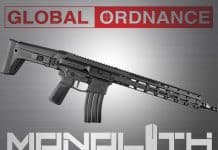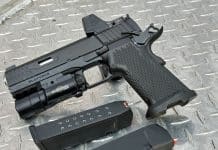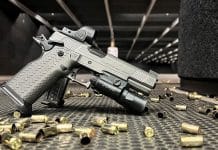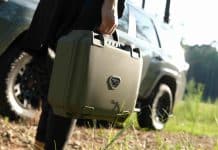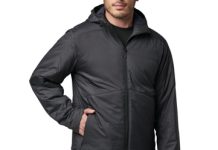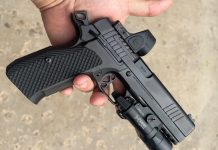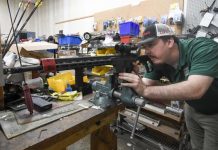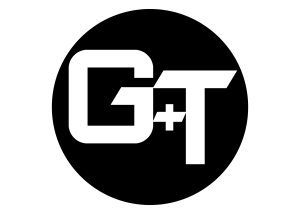Choosing the right gear and using it correctly can make or break your experience with your personal firearm. Having a well-fitting and easily accessible holster that is designed for your preferred style of carry is critical. In order for you to safely carry, you need to be comfortable with your gun, as well as all of the supporting gear.
Holsters are not a one size fits all item. Your type of firearm determines which kind of holster you need. Whether you are looking for a new holster for a weapon you’ve had for a long time, or want a holster to match your new pistol, here are the things you need to consider before settling on a piece:
Advantages of Different Materials
Gone are the days when holsters are just made from simple cow hide. As the styles of guns and demand of owners have evolved, holsters have advanced to match. A number of different materials are now used in the construction of holsters, but most modern pieces are focused on utilizing one of the following supplies.
Leather – Nothing offers that traditional and rugged appearance for a holster better than leather. Bringing a sense of the Wild West, leather holsters have a classic appeal that open carry owners love. Because leather is a more malleable material, it can easily be shaped to provide a firm grip on a weapon; though it offers a downside in that repeated use may end up causing minute wear and tear on a weapon’s finish.
Nylon – A nylon holster is the way to go when you need the most portable solution. Because of the lighter material, these holsters are perfect for smaller handguns and well suited for conceal carry. They also typically feature softer inner linings to minimize the wear on your weapon’s finish. However, if you don’t pick the right nylon holster for your weapon, you are more likely to end up with a looser fit; resulting in safety issues as well as discomfort from your gun digging into you.
Kydex – The most “modern” looking holsters are made from kydex. Since these holsters tend to be more hard-sided, they are great for keeping your weapon firmly in place on your body; especially when carrying in situations that involve a lot of movement. However, these holsters don’t offer a universal fit so you’ll need one specifically made for your handgun. The rigid material can also wear away the finish on your gun more quickly.

Choosing the right materials for your handgun largely depends on personal preference. There is no best holster for all circumstances, so it’s best to try your weapon with different options to see which provides the best grip on your gun, and the best level of comfort for your carrying style.
Choosing the Right Carry Style
Comfort isn’t always something you consider when first choosing a holster. But if you carry daily, you’ll find it to be a critical part of the decision. Modern holsters offer a lot more options than just attaching the holster directly onto the belt. The most commonly carry options include.
Inside-the-waistband – Standard holsters designed for carrying inside of your pants. Ideal for conceal carrying as you can easily tuck your shirt over the firearm and the weapon stays firmly against your body. This is the most popular for concealed carry. Softer holster materials are typically used for IWB carry. While more comfortable, you might also have difficulty re-holstering your weapon.

Outside-the-waistband – Holsters that go just outside of your pants, but holds the weapon against your body at waist height. Easier for drawing your weapon than IWB holsters and can be more comfortable to wear with casual clothing. However, they can be difficult to control without the right belt.
Small of the back – Holds your weapon firmly against your back without much risk of shifting. This holster can easily be moved to better suit draw hand preference and offers the opportunity for easy and fluid drawing. It is especially popular with law enforcement for use with backup weapons for their standard issue pistol. These holsters can also be easily concealed, but might noticeably imprint if the wearer bends over or sits down.
Shoulder – Your weapon is held against your side with a strap over both shoulders with this style of holster. It provides a looser fit so it is doesn’t keep your weapon immobile in active situations. Shoulder holsters can be oriented either horizontally or vertically and provide quick access to your weapon. They may be outfitted with pouches or other accessories and require more layers to conceal, so they are better suited for open carrying.
Ankle – Holsters designed to keep your firearm attached to your ankle. They are an ideal way to carry compact firearms and easy to conceal with looser fitting pants. Accessing the weapon in tactical situations is counterintuitive though and requires a lot of practice to be effective.
Thigh – Reported as one of the more comfortable ways to carry since the weapon is strapped directly onto the thigh. Your firearm remains firmly in place regardless of activity. Also, your pistol is kept at a position where your hand naturally falls. Thigh holsters put less weight around the waist for a healthier distribution. They should be used for open carrying since it is extremely difficult to access your weapon if you try to conceal it under clothing.
Before you decide which of these styles works best for your needs settle on how you will carry: open carry versus conceal carry. This decision might depend on local laws, as well as the type of firearm you have. Compact pistols are better suited for conceal carrying. Revolvers and other large handguns designed for tactical situations may be better suited for open carry holster to match for better weapon access. These all need to be considered when choosing your preferred carry style.
Consider Why and Where You Carry
Another thing to keep in mind when choosing a holster is which situations you plan to carry in. If you are carrying in the wilderness or plan to go over more rugged terrain, then it’s important to have something that won’t shift easily. Ankle and thigh holsters tend to “give” less as the body shifts and are ideal when you are moving a lot. For normal everyday carrying, then going with a waistband option is perfectly suited for walking the urban streets as you perform errands or other normal routines.
Why you are carrying should also be decided. If it is for personal protection, conceal options like ankle and inside-the-waistband choices are better because they can easily be tucked under clothing.
Try out different options with the handgun you intend on carrying to find the right style for your needs. Make sure it provides enough comfort so your weapon won’t dig into you, but also will keep your weapon secure. Once you’ve settled on an option then practice drawing so it can be done without thinking in case you find yourself in a dangerous situation.
Outfitting Holsters with Accessories
Modern holsters aren’t used simply for carrying a weapon. As gun owners have demanded more from their holsters, designs have been modified so you can easily outfit them with accessories and other extra pieces. Some of the more popular options include:
- Ammo Pouches
- Clips for Tools
- Mounts
- Guards
- Retention Devices
- Belt loop Adapters
- Speed Clips
These are just some of the items developed to give gun owners more of an edge when they carry. Whether these features are built into a holster or come as an aftermarket attachment, it’s a good idea to research them and see if they can provide you with added support you may need in various carrying situations.
Ensure Your Holster Complies with All Laws
Responsible gun owners know there are a lot of laws related to firearms beyond the 2nd Amendment. Those laws – both federal and local – aren’t limited to guns themselves. Carrying laws can also impact the holsters you are allowed to use. Local ordinances may prevent you from conceal carrying or open carrying, depending on where you live. Laws can also set permits on how you carry. When it comes to regulations, holsters are commonly divided into four groups:
- Duty – Typically worn by law enforcement
- Tactical – Typically worn by military
- Concealment – Typically worn by plainclothes officials and private users
- Sporting – Typically worn for sports and hunting situations

Duty 
Tactical 
Concealment 
Sporting
Depending on the intended use of your firearm, there can be restrictions on when and especially where you are allowed to carry. Gun laws and practices also vary from state to state, or can change without notice to comply with the most recent legislation. Consistently checking up on laws where you intend to carry is helpful to make sure your holster is always legal. This is where it can really pay to follow gun news sites and outlets.
Responsible Usage Requires Constant Practice
When you settle on the best holster for your firearm of choice it’s important to be in regular practice of using it. Carrying your holster as often as possible, both with and without your weapon, allows you to become more comfortable wearing it. This can also help you determine whether the holster might dig or shift on you with movement, as well as what clothing you can wear without causing issues.Routinely drawing your weapon from your holster is also a critical component of holster usage. Doing so will ensure you have the best access to your weapon in any situation. Committing yourself to routine practice will help develop instinctual movements to provide the best use of your holster possible in critical instances.
Looking to choose the right handgun for you? Check out this previous article to help you out.










